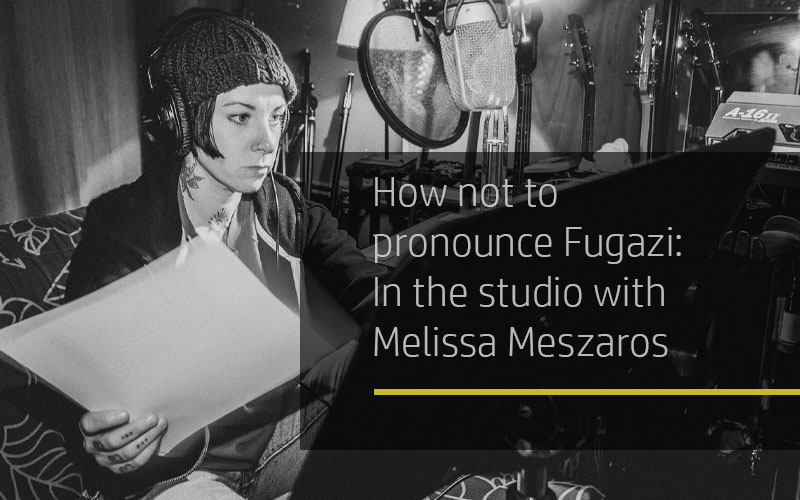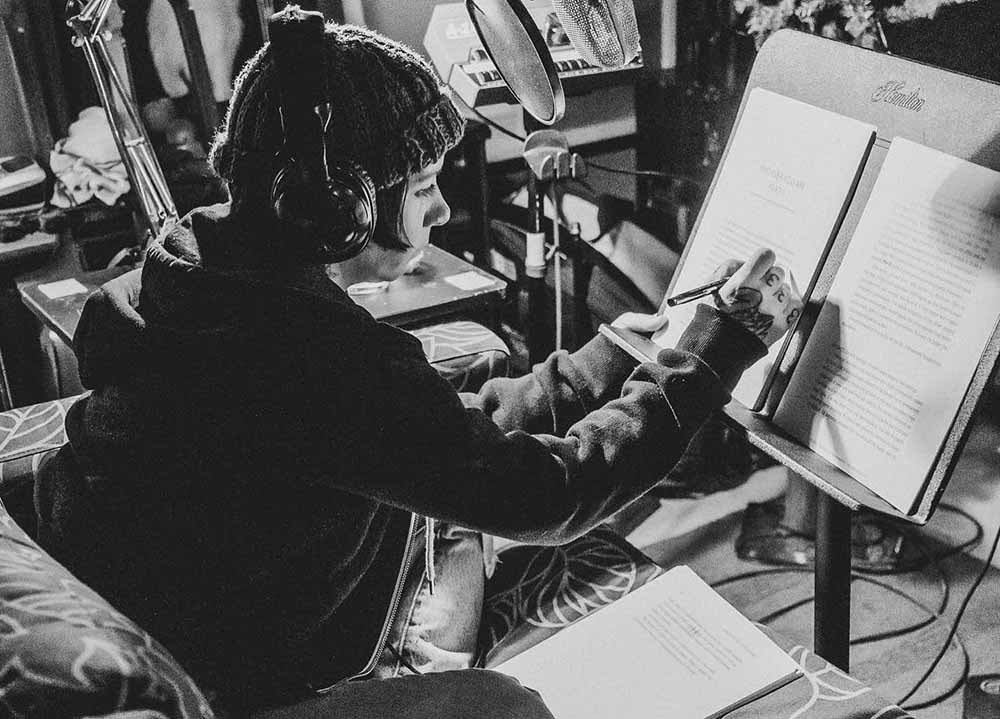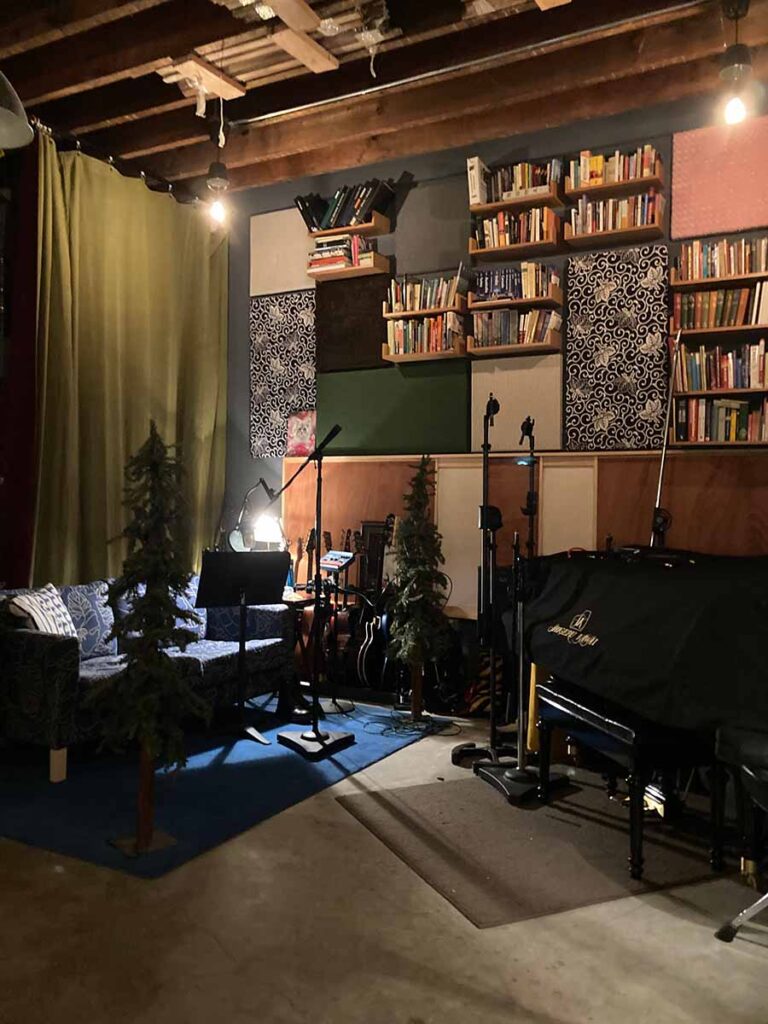
How not to pronounce Fugazi: In the studio with Melissa Meszaros
The Hall of Justice Recording Studio in Seattle’s Freemont district is where author Melissa Meszaros narrated and recorded Heavy Metal Headbang, the audiobook based on her own true story, published recently by Oil On Water Press. Nirvana’s Bleach and Mudhoney’s Superfuzz Bigmuff are just two of the classic albums recorded at Hall of Justice, and so the studio was a logical choice for Melissa.
Heavy Metal Headbang follows a life in turmoil after Melissa receives a traumatic brain injury in an accident on her way to a Judas Priest concert. It is a story underscored by a love for grunge and metal, which becomes the invisible soundtrack that helps her to keep moving forward as everything around her burns.
When the idea of the audiobook edition was raised, Melissa suggested that she might like to narrate it. The decision process took two seconds. While it seems logical for an author to read their own work as an audiobook, it’s far from common for a whole variety of reasons. Yet no one can listen to Heavy Metal Headbang and think of anyone but Melissa telling her story.
Read the interview and then listen to an extract.
DAVID KEREKES: Was this your first time narrating an audiobook?
MELISSA MESZAROS: It was! As an avid listener of Patti Smith’s audiobooks in particular, I can appreciate the extra personal touch of sharing your own narrative in your own voice. I went back and forth on this a lot, not even realising its full importance and potential—that is, until last summer, when I listened to Keith Morris’s My Damage. The narrator mispronounced Fugazi, and things came full circle. That’s when I decided that my Pennsylvania-native accent might be the best fit for the feel and energy of the audiobook, making it more personal for the listener.

How did you approach it?
I had thought of recording at home and was even offered the proper equipment to do so, but as I got in the thick of recording the demo track, it became apparent that this was not going to be an easy solo venture.
So I began doing research about studios around town. That’s when I got the idea to have a lot of fun with it, to make it a proper professional recording while relishing in my love for the grunge music scene of the late 1980s and early 1990s. I sent over a query to Hall of Justice, formerly Jack Endino’s Reciprocal Studios, where the very first grunge record, the Deep Six compilation, was recorded, as well as a lot of the early Sub-Pop singles and LPs. Chris Walla (Death Cab For Cutie), who now owns the studio up in Seattle, called me up and we discussed the project. Chris was very enthusiastic, told me it would be the first audiobook to be recorded there, and that there was a roster of studio engineers available—it was kismet! I quickly enlisted my friend, brilliant documentary director and producer, Jarrod Tallman (Mundaka, Still Filthy), to help out.
Mike V. Davis, the amazingly talented audio engineer, put me right at ease. Mike previously worked with a slew of recording artists such as Sam Rae, Versio Curs, and Man on Man. He even put in a couch, with fake fir trees around the dimly lit studio. Pots of coffee, too!
The history those walls held and the folks I knew who had been through there left me with a surge of elation that made me feel closer than ever before to my heroes. It was like I was paying homage as I read my adoration for them aloud.

It’s a very personal story. Did you find things in the story that perhaps weren’t apparent to you on the page?
Reading it aloud made the content feel different. I began to appreciate the narrative as a whole new story, as if I was a storyteller as opposed to the author of my own memoir. When you’re writing it’s a silent reverie. While recording, you’re “acting” in ways, which helped me focus more on the emotion in each section through expressive tones. Not only adding invisible commas or breaks, but also trying to avoid characterising the voices of others, which was challenging at times. One part in particular was done in a single take, and while reading, I felt the honesty and sadness I actually began to cry—even Jarrod and Mike said they teared up a bit. We kept the track and made no adjustments because it was organic.

Can you tell us a little about the studio and the technical process?
That I owe that all to the team! The recording itself took eighteen hours, but with both Mike and Jarrod’s guidance with cadence, it felt very comfortable. Mike was able to help set the tone and speed with his technical wizardry. Jarrod helped with inflection and direction with certain words and sentences. I read section by section with breaks, and if they were shorter, we’d record two and three at a time; re-recording in spots where there were errors as we went along. Mike sent the unmastered recording, and Jarrod and I went through each to iron out the details from home, which took a couple of days. With our editing notes, Mike completed the master tracks. The process took about two weeks to finish. Then again, it’s a shorter book and we were all tethered by creative synergy, trust and the crazy-automatic kinship we felt in working together.
Any tips for aspiring audiobook narrators?
Rest your voice. Don’t try to force the narrative in the way that you think it should be read and let it flow. Take your time. If possible, enlist someone to lend an ear to make sure things sound cohesive. Learn your recording tools and have decent equipment or hire a recording professional if you can. Respect the process and just go with the flow.
David Kerekes
Like this article?
Related Posts
Comments
Copyright © Oil On Water Press

